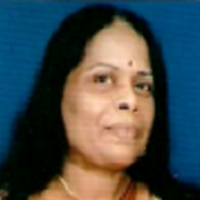Seshendra Sharma
“life kindles the flame of poetry. the poet being the wick that burns to shed warmth and light. the sun can show visible objects like building, trees, birds, hills, people and so on. poetry shows, on the other hand, life with its joys and sorrows, its secrets, problems and finally its solutions. wisdom is given in capsules of metaphors, the basic units of poems.”
that was gunturu seshendra sharma, telugu poet, critic, and scholar, after winning the sahitya akademi’s award. no wonder seshendra’s genre of poetry, characterized by long poems, reflects human suffering, agony and deprivation of the poor
if a poet is one who has intense emotional feeling, seshendra personifies them all. sitting cross-legged in a period settee, he brought forth al his emotions, during an interview. “ my personal experiences which moved me into intense emotional levels took shape as poems”.
easily one of the best know telugu poets in the hindi belt of north india, his works translated into different languages have come in for liberal appreciation by litterateurs like ali sardar jafri, dr. viswambharnath upadhyay, veerendra kumar jain and prof. indranath chowdary
he renders poetry and literary criticism with equal felicity. these features fetched him the sahitya akademi award both as a poet and a literary critic the award was for his work “kaala rekha”., a collection of essays on comparative literature, laced with poetic passages full of metaphors.
“ symbols and metaphors visit only those who have prepared themselves as the medium to receive them. the difference between an ordinary soul and a poet is that the latter cultures himself by going near and getting involved in life and literature. by such a process of involvement one ceases to be the ordinary individual and becomes too sensitive and, therefore susceptible to the invasion life on him. he is like a fiddle with strings drawn to the final limit and even a whiff of wind can knock out a note of melody from the vibrant strings. at this point the individual is called poet”. he says.
seshendra has authored over 40 books mostly of poetry, a play, a short story, and many essays and shot into fame with the modern epic ‘naa desham-naa prajalu’ (my country-my people-modern indian epic) published in 1975, widely hailed as ‘turning point’ for its significant contribution not just to telugu literature but to indian literature as a whole. it was soon rendered in english, hindi, and urdu, the last by akhatar hassan with a foreword by the urdu poet, ali sardar jafri. the greek translation had a foreword by nikhiphorus vrittakos. widely traveled, his depth in understanding of telugu, sanskrit, hindi, english french and german literatures appears to be rarely matched.
along with “ naa desham-naa prajalu”.”munday suryudu”(the burning sun) ,his second long poem and “gorilla’, ‘gave for the first time a genuine poetic expression to the revolutionary content, introduced into telugu poetry by sri sri, four decades ago, as the telugu university acknowledged in the ecitation presented to him while conferring on him the d.litt degree in 1994.
“ this is a historic event in the annals of telugu poetry. from then the non-metaphorical writing that was prevailing for over years in the name of poetry, before seshendra, came to a halt; and metaphorical writing became the order of the day. the same new poetic idiom created by seshendra is even now in vogue having been adopted by all. for this reason, seshendra has a unique place in telugu literature, as a trendsetter and architect of a new era. the emergence of mahakavi seshendra sharma in telugu literature ushered in a dazzling new era. whenever his poetic vision touches the destiny of mankind, it had unfolded in a lofty and stentorian voice.. adds the telugu university citation, describing seshendra’s works and the poet in him with near perfection.
his other works include “ rithu ghosha” written when he a was a municipal commissioner of bobbili, ‘shodasi’ his original tantric commentary on sundarakanda of valmiki ramayana, ‘swarna hamsa’, another tantric commentary on naishadhiya charitam of harsha bhatta and sesha jyotsna. having got the copyright, his second son, saatyaki, now started publishing his works through jyotsna publications. one such publication ‘sahitya darshini’ sparked a debate in the telugu literary world last year, as it contains scathing comment on the poet’s contemporaries.
born on october 20, 1927 in nellore, seshendra’s first encounter with poetry was early in his childhood, the scholarly background of his family influencing him. his published work dating back to 1946 as a student and contemporary of former chief minister, n.t. rama rao, in a.c. college, was nothing short of being revolutionary and outrageous, though it was for the college magazine. he wrote ‘chandalopi mama guruhu’, depicting sankaracharya’s encounter with a dalit on the banks of the ganga. at eh age of 24, he rendered ‘sohrab and rustom’ from persian epic shahnaama.
awards came to him, especially in his home state of andhra pradesh rather belatedly; an aspect which continues to hurt him. “ though i have been in poetry and literature for so many decades now, i got the first award in 1993, that too not in the state but from the rashriya hindi academy in calcutta”. the next was again from the akhil bharatiya rajbhasha sammelan in 1994. there was no stopping and he invited to attend the world hindi conference at nagpur in 1975, and the last one at trinidad in 1996.
the hindu
india’s national news paper
hyderabad,
monday, september 9th, 1996
Powered by Froala Editor



.jpg)
LEAVE A REPLY